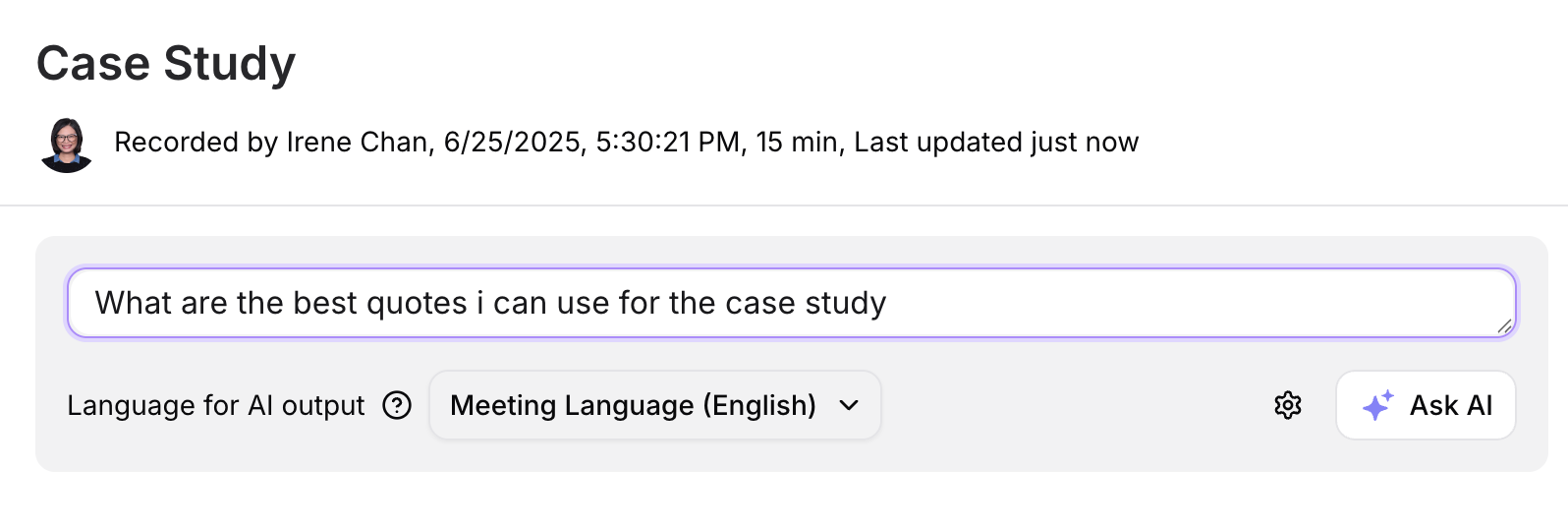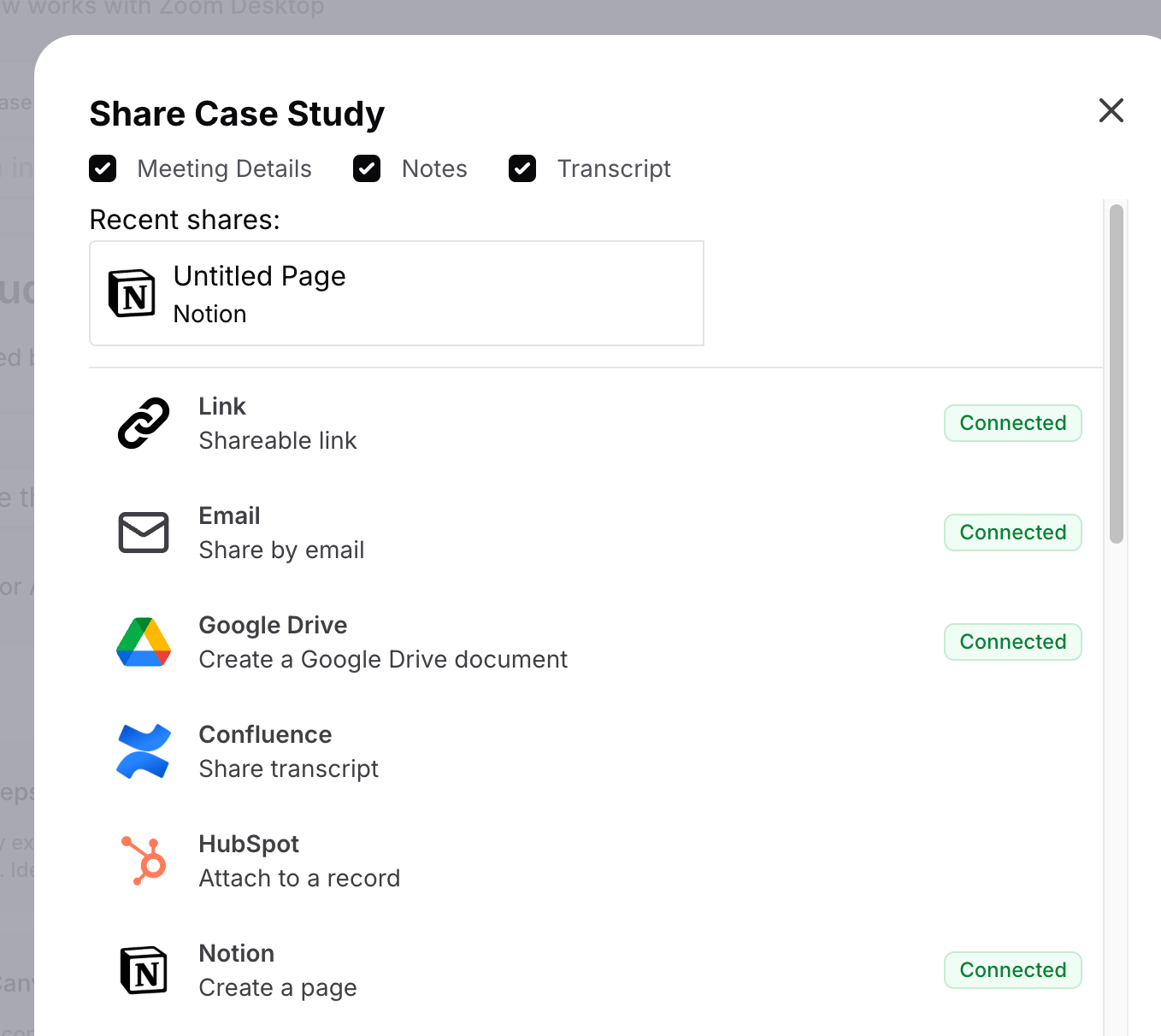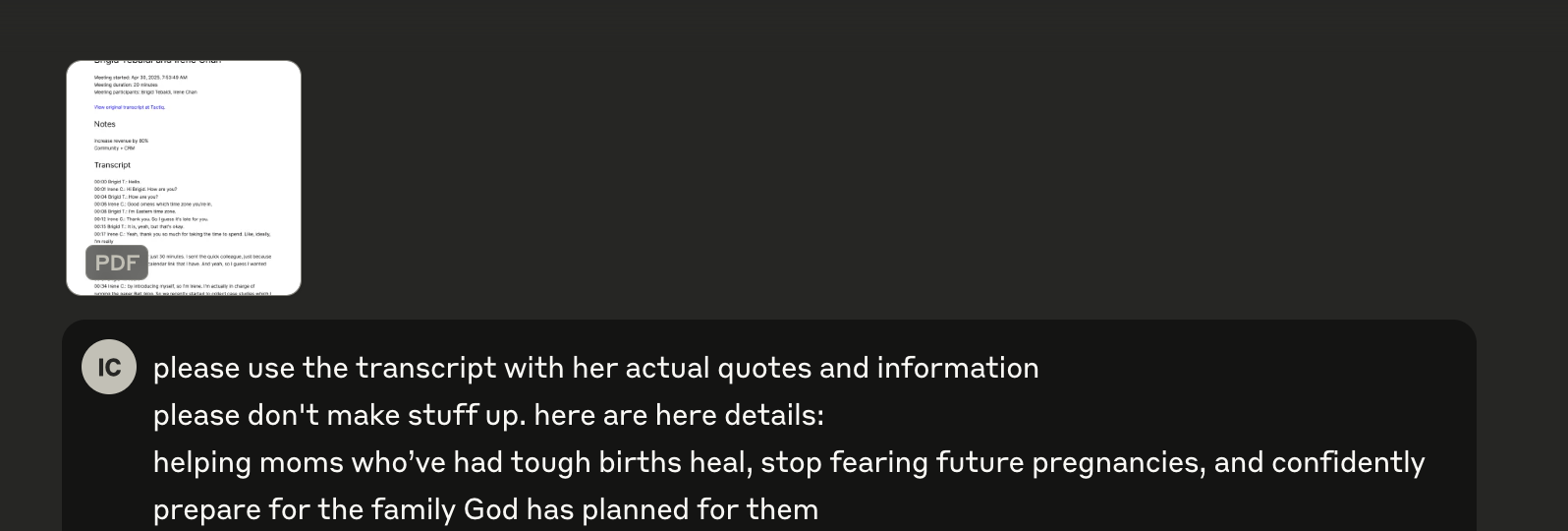Turning an Interview Transcript into a Case Study
July 2, 2025
July 2, 2025
July 14, 2025
July 14, 2025
Have you always wanted to publish a case study for your blog, but feel like the process is too overwhelming? You know how valuable case studies are, but it’s difficult to get started, let alone publish a whole blog post.
But case studies are becoming more important than ever. With generative AI and large language models, SEO is changing dramatically. It’s not enough to publish informational blog posts. You need to publish original and unique data in your industry.
That’s why case studies are so important. In fact, 75% of B2B marketers use case studies as part of their sales funnel.
Instead of spending weeks crafting a single case study, you can now transform a 30-minute customer interview into a comprehensive, SEO-optimized blog post in just hours. This approach captures authentic customer voices while scaling your content marketing efforts efficiently.
Let’s start with the first step!
Preparing for the Interview
The interview transcript will be your core content. It needs to be structured, organized, and comprehensive.

The questions for the interview could vary, depending on your product and industry. But in general, here are the questions to ask for a case study:
- What was hard about your business before you used [product/service]?
- What tools or processes were you using before, and what wasn’t working about them?
- How did you first hear about our [product/service]?
- What made you decide to sign up? Were you nervous or unsure about anything?
- What was your first impression after getting set up?
- What’s your favorite feature or part of using our [product/service] so far?
- How has it changed the way you run your business day-to-day?
- What specific benefits or results have you experienced since using our [product/service]?
- What did you learn about yourself or your business during this transition?
- What would you say to another [your target audience] who thinks they’re not “ready” for [product/service]?
You can follow these exact questions, or you can remove some questions that might not be applicable. Note that there will be follow-up questions during the call. It’s something that you have to play by ear.
Once you get this right, your transcript is going to be rich with data that will be part of your case study blog post.
How to Get a Transcript of the Interview Using Tactiq
Once you have all your questions prepared, make sure to set up a real-time transcription tool like Tactiq. This allows you to focus on the interview without having to take notes manually.
For example, when you use Tactiq, you can:
- Get the real-time transcript during the call.
- Automatically highlight important insights and questions.
- Get the full transcript of the call with speaker highlights.
- Use Ask AI to summarize parts of the transcript with citations easily.

Installing Tactiq is easy. Here’s a step-by-step guide:
- Go to the Chrome Web Store and install Tactiq.
- Connect your video conferencing tool: Google Meet, MS Teams, or Zoom.
- You’ll only need to connect it once.
- Join the call as usual, and you’ll see Tactiq automatically transcribe the call.
- Ask the questions that you prepared.
After the call, go to the Tactiq dashboard and navigate to the interview transcript. There are many ways to get the full transcript from Tactiq. You can:
- Export it as a PDF.
- Share the transcript on Google Drive.
- Send it to Notion and similar project management tools.
Check out the list of integrations with Tactiq that work best with your workflow.

Now that you have the full transcript, you’re ready to start writing with AI.
{{rt_cta_ai-convenience}}
Transcript to Case Study Sample
In this step, you can use any of your favorite Large Language Models or generative AI tools, such as ChatGPT or Google Gemini. But in my case, I love to use Claude. More specifically, Claude Projects.
I find that the Claude Project is the best way to produce on-brand content with minimal editing.

Here are the steps I take once I have the transcript:
- Upload a style guide of your blog or a specific style guide for a case study (if you have one).
- Upload the transcript to Claude.
- Write the most detailed prompt you can.
For example, here’s mine:
Write a case study blog post based on [Brand Name’s style] using this full transcript. The case study should be a minimum of 1000 words. Here is an example of a case study that I like [paste a link]. You can use that as the structure of the post. Use the full transcript as the content of our own case study. Please include direct quotes when possible. Do not make stuff up. Only used the information that is in the transcript. Make sure to have clear and specific headings.
You can add more, depending on your specific instructions, but this was my base prompt. I was able to produce an on-brand blog post that our CEO immediately approved. The only thing that we changed is the headings.
You can eventually create a Claude Project if you’re planning to scale the case study. At the time I did this case study, it was a test. We asked: Could we write a case study blog post with AI without involving our writers? The answer was yes, making our experiment a success.
It is now part of our monthly content workflows. My next step is to create a Claude Project to further improve and streamline the steps.
Wrapping It Up
Transforming interview transcripts into compelling case studies using AI represents a strategic approach to scaling authentic customer storytelling that drives both SEO performance and business growth. By combining real-time transcription tools with advanced AI writing assistants like Claude, you can create a systematic workflow that consistently produces high-quality case studies.
This method captures genuine customer voices, emotions, and specific details that make stories truly compelling. When you use AI meeting notes and transcription technology, you're preserving the authenticity that makes case studies powerful conversion tools while saving significant time and resources.
Automatic transcript generators like Tactiq achieve high accuracy rates. The accuracy depends on factors like audio quality, background noise, and speaker clarity. Most professional transcription tools can achieve 90-95% accuracy under optimal conditions. For case studies, any minor transcription errors can be easily corrected during the editing process.
Absolutely! You can upload existing meeting recordings or audio files to transcription tools like Tactiq to generate transcripts retroactively. This is perfect for businesses that have recorded customer interviews or testimonials but haven't yet transcribed them.
Meeting minutes are structured summaries focusing on decisions, action items, and key outcomes, while case study transcripts capture the complete conversation with customer emotions, specific quotes, and detailed explanations.
Tactiq simplifies the entire interview process by providing: Real-time transcription during video calls, automatic highlighting of key insights and quotes, full post-call transcripts with speaker labels, easy export to PDF, Google Drive, Notion, and more, and built-in AI tools like Ask AI for summarizing key parts with citations.
Once your transcript is ready, upload it into an AI tool like Tactiq or ChatGPT. Use a detailed prompt that includes: A style guide or tone reference, an example case study you like, instructions to use direct quotes and only transcript-based info, a target word count and formatting guidelines.
Want the convenience of AI summaries?
Try Tactiq for your upcoming meeting.
Want the convenience of AI summaries?
Try Tactiq for your upcoming meeting.
Want the convenience of AI summaries?
Try Tactiq for your upcoming meeting.









